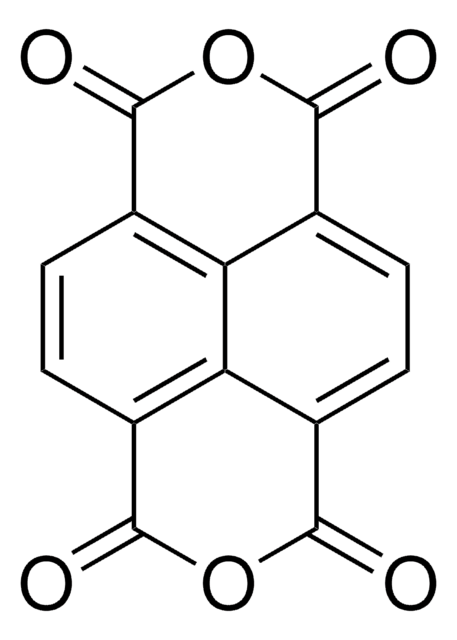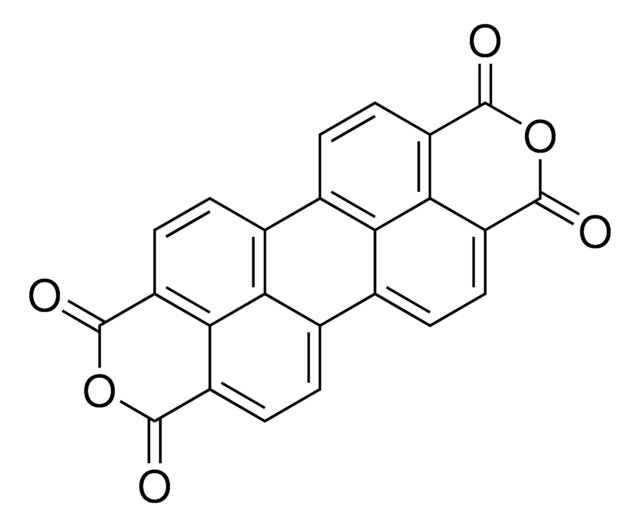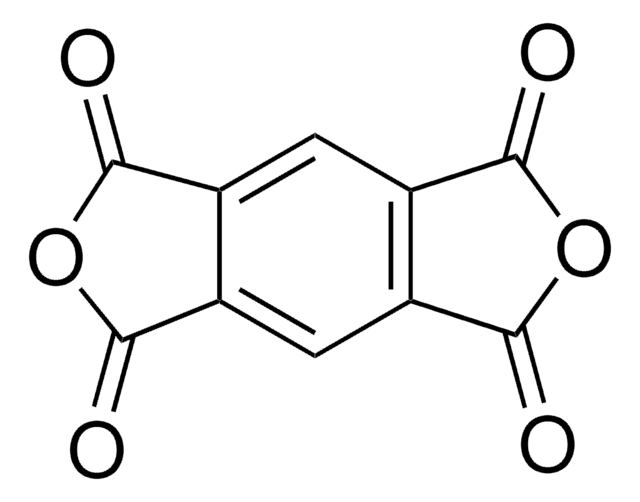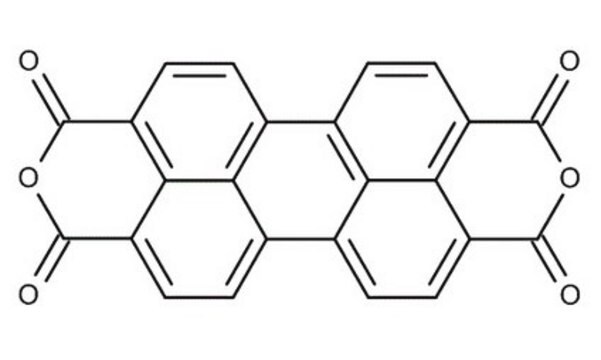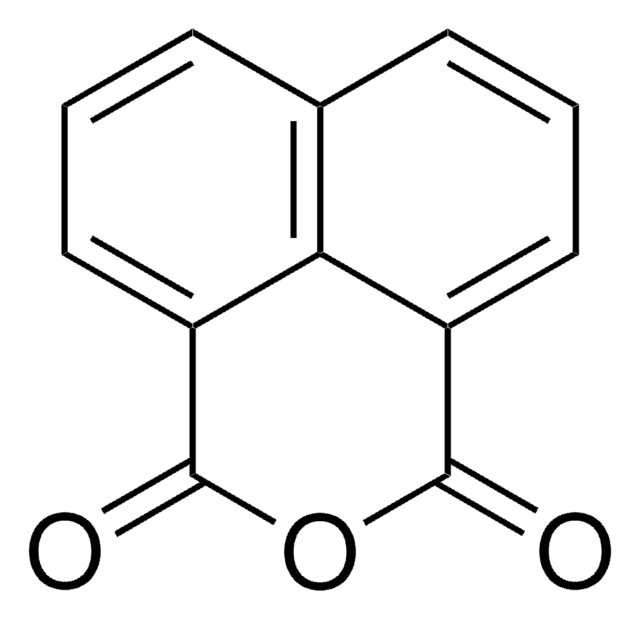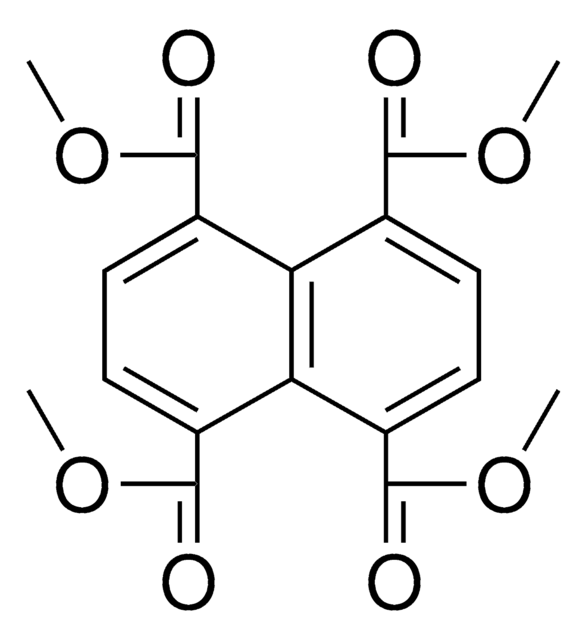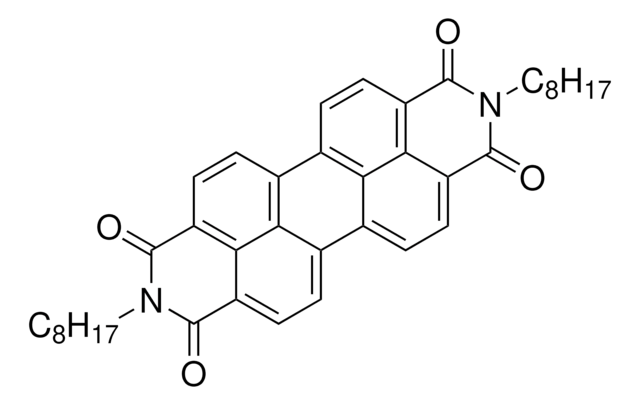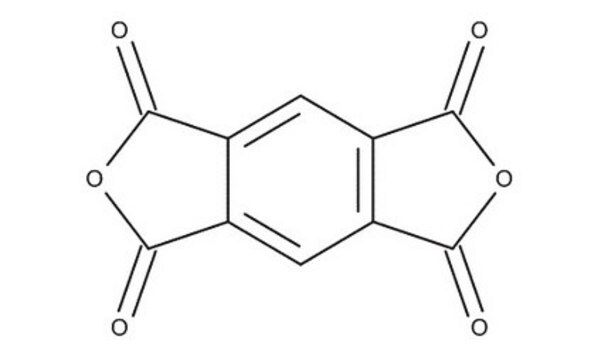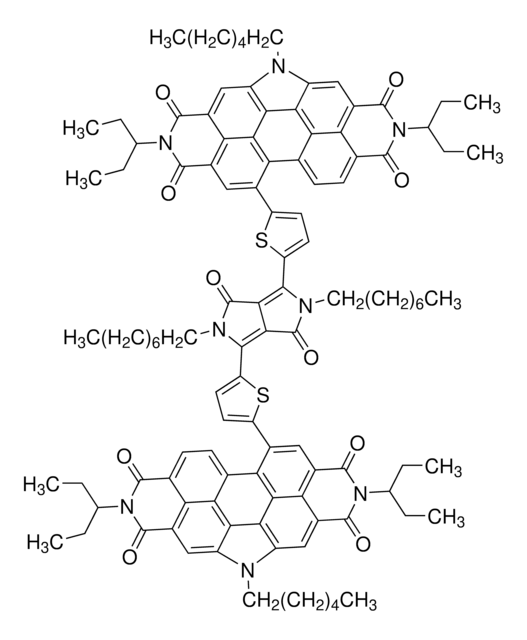932221
1,4,5,8-Naphthalenetetracarboxylic dianhydride
≥98%
Synonym(s):
6,13-Dioxatetracyclo[6.6.2.04,16.011,15]hexadeca-1(15),2,4(16),8,10-pentaene-5,7,12,14-tetrone, Isochromeno[6,5,4-def]isochromene-1,3,6,8-tetraone, NTDA, Naphthalene-1,4,5,8-tetracarboxylic dianhydride, NTCDA
About This Item
≥98%
Recommended Products
grade
sublimed grade
Quality Level
Assay
≥98 (elemental analysis)
≥98%
loss
0.5% TGA, > 270 °C (weight loss)
mp
>300 °C (lit.)
solubility
dichloromethane: soluble
fluorescence
λem 392 nm±10 nm in dichloromethane
λ
in dichloromethane
UV absorption
λ: 366 nm±5 nm Amax
SMILES string
O=C1OC(=O)c2ccc3C(=O)OC(=O)c4ccc1c2c34
InChI
1S/C14H4O6/c15-11-5-1-2-6-10-8(14(18)20-12(6)16)4-3-7(9(5)10)13(17)19-11/h1-4H
InChI key
YTVNOVQHSGMMOV-UHFFFAOYSA-N
Looking for similar products? Visit Product Comparison Guide
Application
Signal Word
Warning
Hazard Statements
Precautionary Statements
Hazard Classifications
Eye Irrit. 2 - Skin Irrit. 2 - Skin Sens. 1 - STOT SE 3
Target Organs
Respiratory system
Storage Class Code
11 - Combustible Solids
WGK
WGK 2
Flash Point(F)
Not applicable
Flash Point(C)
Not applicable
Choose from one of the most recent versions:
Certificates of Analysis (COA)
Sorry, we don't have COAs for this product available online at this time.
If you need assistance, please contact Customer Support.
Already Own This Product?
Find documentation for the products that you have recently purchased in the Document Library.
Our team of scientists has experience in all areas of research including Life Science, Material Science, Chemical Synthesis, Chromatography, Analytical and many others.
Contact Technical Service